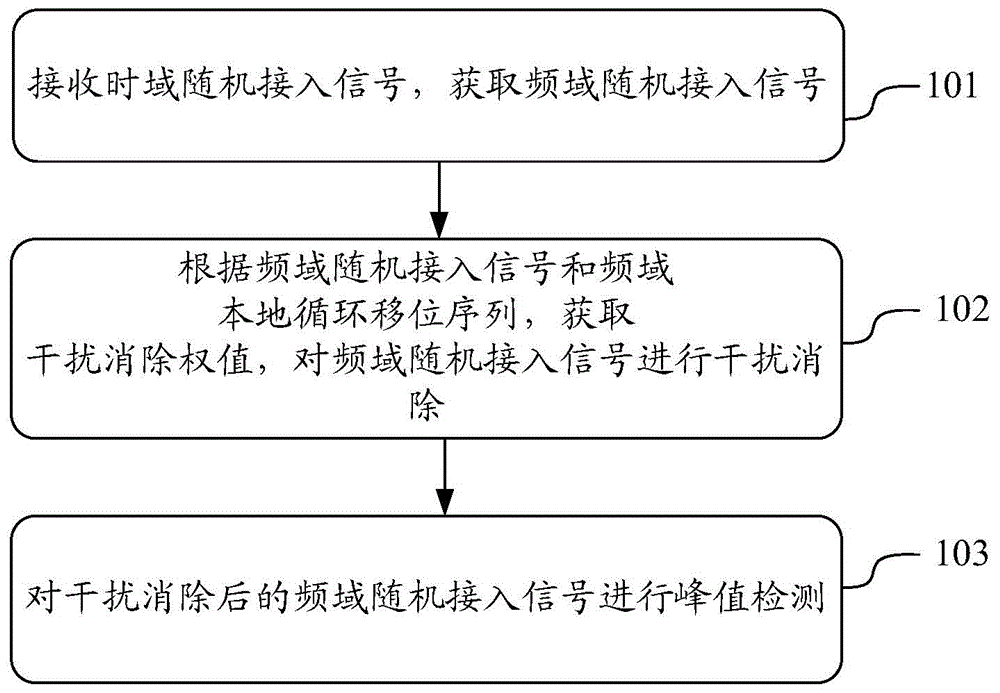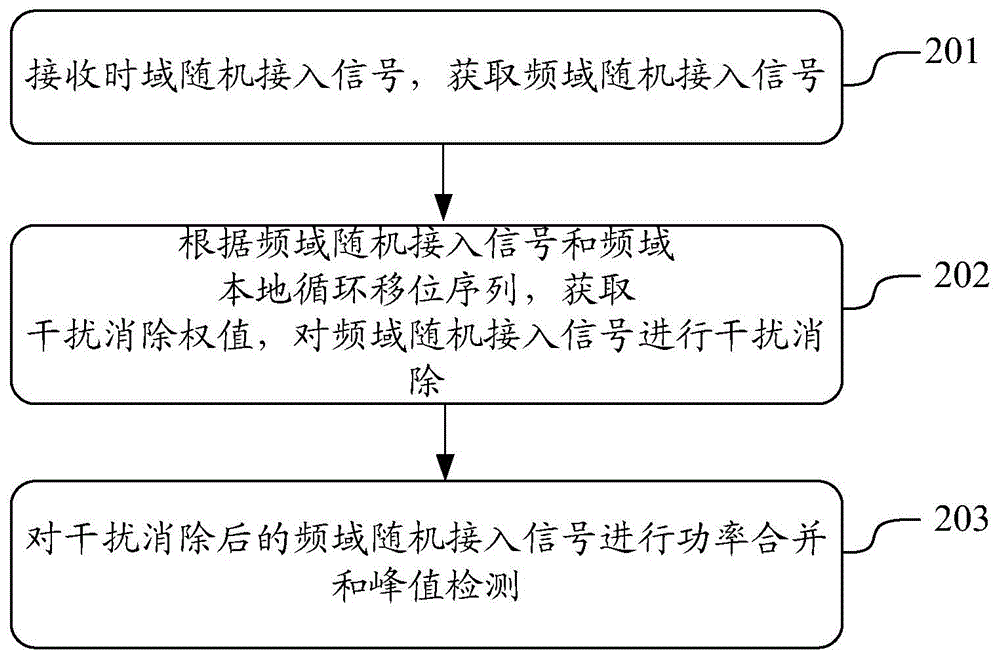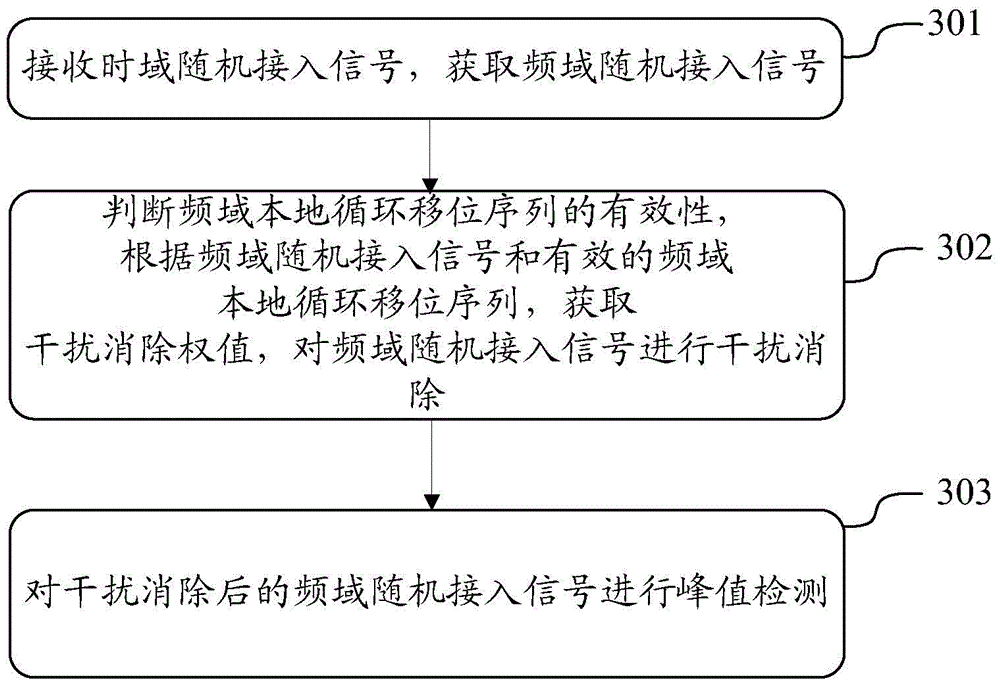Detection method, device and system of random access signals in interference environment
A random access signal and detection device technology, applied in the transmission system, digital transmission system, modulated carrier system, etc., can solve the problems of high missing or false detection index, large resource occupation, difficult implementation and application, etc., to achieve The effect of eliminating the deterioration of missed detection performance and false alarm performance, saving resources, and improving accuracy
- Summary
- Abstract
- Description
- Claims
- Application Information
AI Technical Summary
Problems solved by technology
Method used
Image
Examples
Embodiment 1
[0028] Example 1 as figure 1 As shown, a method for detecting random access signals in an interference environment provided by the present invention, the method includes the following steps:
[0029] Step 101, the base station receives the random access signal in the time domain, and obtains the random access signal in the frequency domain
[0030] The base station receives the random access signal in the time domain and converts it into a random access signal in the frequency domain. The specific formation process of the frequency-domain random access signal may be as follows: the base station performs fast Fourier transform (FFT) processing on the received time-domain random access signal to transform the random access signal from the time domain to the frequency domain. Of course, before the FFT, down-sampling may also be performed on the received random access signal.
[0031] Step 102, the base station obtains interference cancellation weights according to the frequency...
Embodiment 2
[0044] Embodiment 2 is when the random access signal is a random access signal in a repeated format, the following method is adopted, the method is as follows figure 2 Shown include the following steps:
[0045] Step 201, same as step 101;
[0046] Step 202, same as step 102;
[0047] Step 203 , perform power combination and peak detection on the frequency domain random access signal after interference cancellation.
[0048] Among them, the specific process of power combining and peak detection can be as follows: the frequency domain random access signal after interference cancellation is multiplied by the frequency domain local root sequence or the frequency domain cyclic shift sequence conjugate point, and then processed by inverse fast Fourier transform The random access signal is transformed from the frequency domain to the time domain, and then the modulus square is calculated to obtain the peak detection sequence. The peak detection sequence corresponding to the repe...
Embodiment 3
[0051] Embodiment 3 is another method for detecting random access signals in an interference environment, such as image 3 As shown, the method includes the following steps:
[0052] Step 301 is the same as step 101;
[0053] Step 302, similar to step 102, the difference is that all frequency-domain local cyclic shift sequences are judged for sequence validity before obtaining interference cancellation weights, and only the frequency-domain cyclic shift sequences judged to be valid are obtained for interference cancellation weights, and then perform weighted combination on frequency-domain random access signals according to the interference cancellation weights, so as to obtain frequency-domain random access signals after interference cancellation.
[0054] Wherein, the specific process of sequence validity judgment may be: performing validity judgment according to the characteristics of all frequency-domain cyclic shift sequences RSY, or grouping all frequency-domain cyclic ...
PUM
 Login to View More
Login to View More Abstract
Description
Claims
Application Information
 Login to View More
Login to View More - R&D
- Intellectual Property
- Life Sciences
- Materials
- Tech Scout
- Unparalleled Data Quality
- Higher Quality Content
- 60% Fewer Hallucinations
Browse by: Latest US Patents, China's latest patents, Technical Efficacy Thesaurus, Application Domain, Technology Topic, Popular Technical Reports.
© 2025 PatSnap. All rights reserved.Legal|Privacy policy|Modern Slavery Act Transparency Statement|Sitemap|About US| Contact US: help@patsnap.com



